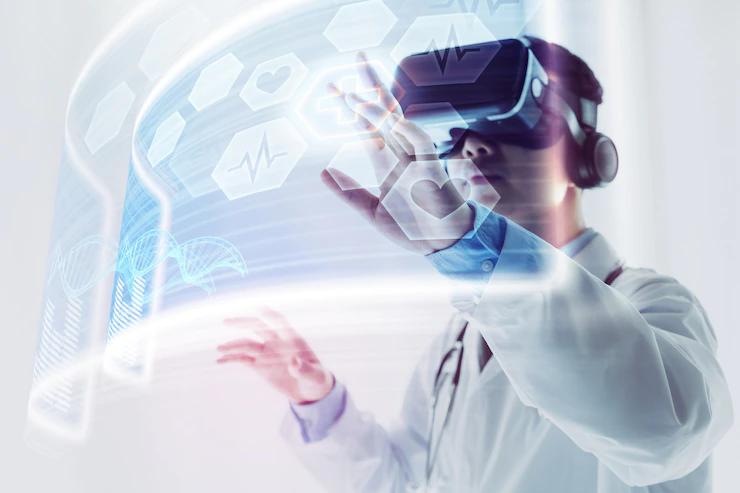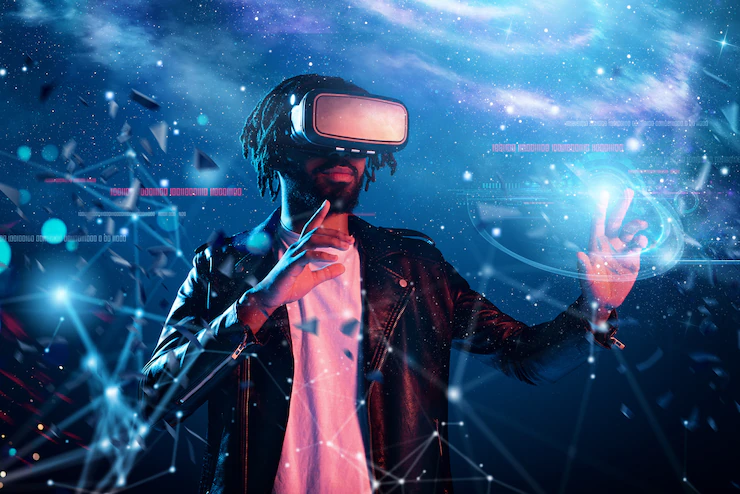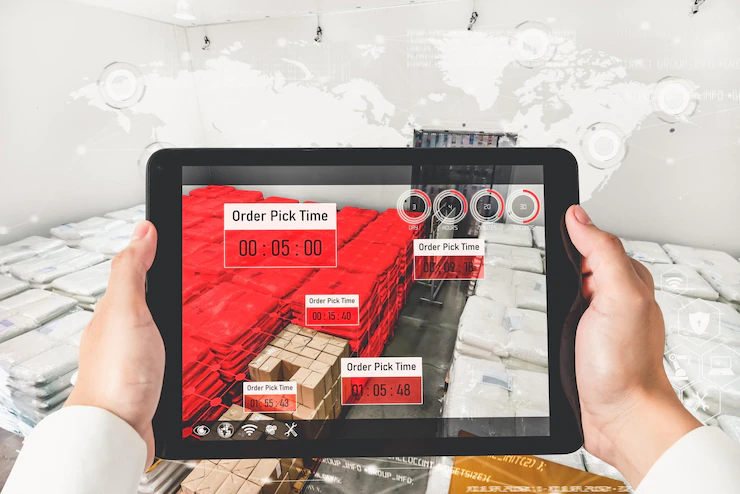Possible Scenarios For The Development Of VR And AR In The World
by Arnab Dey Technology 23 June 2022

Today’s market is looking for applications that go beyond gaming, leisure, or marketing and are more affordable for users. This year, there is a lot of noise and buzz in the VR and AR world. The possibilities of development in VR and AR are exciting as it is challenging for developers. But what does the future hold for the world of VR and AR? Learn more in this article.
What Is The Meaning Of Virtual Reality?

Virtual Reality or VR is a computer-generated environment with realistic-looking scenes and objects that immerses the users in their surroundings. This environment is also perceived by the use of the Virtual Reality headset or by using the helmet.
Each tech company and software development agency is up to the task of developing not only modern mobile applications but also innovating in the Virtual Reality (VR) and Augmented Reality (AR) application functions.
VR enables us to engage ourselves in the different video games as if we were one of the characters, then learn how to perform brain and heart surgery and improve the quality of sports training to maximize skills and performance.
Augmented Reality Defined

Augmented Reality or AR is an improved version of reality and the physical world. It is made possible by using sensory stimuli, digital visual elements, or sound delivered through technology.
It is a growing trend among companies involved in mobile computing and, in particular, business applications.
It also entails superimposing visual, auditory, or other sensory information onto the world to improve one’s experience.
Virtual Reality Versus Augmented Reality

The primary discrepancy between these two is that VR is creating a world where we immerse ourselves by using a specific VR headset. It is entirely immersive, and everything we see is an element of an environment created artificially through images, sounds, and so on.
Meanwhile, in AR, one’s world becomes the framework within which objects, images, and other elements are paced. Everything we see in real life and wearing a headset may not be necessary. Pokemon Go is the clearest and most famous example of this concept.
Possible Scenarios In The Virtual Reality World:

Below are the scenarios to expect in the VR world in the days to come:
1. Increase In Enterprise Applications
If you thought VR was just for gaming, think again. VR is not only a dominant force in the gaming industry but is also a huge asset for businesses worldwide.
The most common applications of VR in businesses are prototyping, tests, remote collaboration, and training. Aside from these, there are numerous creative applications that fall outside these categories. Thousands of these solutions are currently in development, and the impact of VR will be enormous.
2. Easier Software Development
It has become incredibly simple for businesses to create VR solutions, and it should become even simpler in the coming year.
For one thing, the number of development companies is increasing year after year, so collaborating with a top VR company for app design is relatively easy and not pricey.
3. More VR-Specific Services
We’ve discussed how VR is assisting businesses in improving their internal processes, but it’s also important to mention how it is assisting them in making money. A whole new market for the VR services for the knowledge of the consumers and businesses, in particular, is opening up, with frontiers in this field earning the profit-making opportunity.
One of these early adopters is the fitness company Liteboxer, which offers help for professional boxing simulators through premium service VR.
Possible Scenarios In The Augmented Reality World:

Here are the possible developments in the AR world:
1. Through The Indoor And Outdoor Navigation
AR navigation is becoming a more fluid and achievable state than ever before in 2022. Most importantly, advancements in technologies such as Bluetooth Low Energy (BLE), Wi-Fi RTT, antennas, and ultra-wideband make indoor navigation far more feasible than in previous years.
One of the most useful applications of the VR and AR technology is playing augmented reality directions in large indoor spaces such as shopping malls, distribution centers, and airports.
2. In Healthcare
By providing AR/MR-enabled hands-free solutions and IA-based diagnostic tools augmented reality and AI will transform the traditional healthcare business model. The uses of the Microsoft Hololens 2. Take the example. Using this can also provide the information to the surgeon and allow them to use both of their hands during the procedure.
With the continued restrictions which are associated with Covid-19, this is the use of augmented reality solutions. This mechanism addresses the issues such as the complexity of remote patient support and the increased burden on hospitals is becoming increasingly important.
This also includes some of the telesurgery solutions as well as the mental health apps used. That will assist the people in maintaining psychological balance during these trying times.
VR and AR technology can also improve telemedicine solutions which are becoming more popular. Drawing and annotating on the 3D screen, for example, can make communication between doctors and patients. This is much easier and clearer. With the help of remote assistance, tools can also assist clinicians in providing care to patients while reducing downtime.
3. In Automotive Industry
AR technology always has a very significant impact on the vehicle’s safety and usability. Of Tesla Motors. That also demonstrated the capabilities of augmented reality on the road. Although they have not used headsets in the same way, they have used nearly identical technologies to make it possible.
Drivers can see how the vehicle’s advanced suite of cameras constantly analyzes the world around them using object detection and scene analysis now that the “Full Self-Driving Beta” is on the road and being used by many consumers.
The results of this powerful system can be seen on the vehicle’s display, displaying the car’s position in space relative to the numerous obstacles around it.
4. AR Glasses
The reputation of augmented reality glasses and headsets is intriguing. Despite being widely regarded as the future of AR technology and having been tested and used in real-world applications, they have yet to enter the mainstream.
Although Microsoft’s HoloLens2 mixed reality headset is not marketed to consumers, it is used for surgeries and training by medical and military practitioners. The US Army’s Synthetic Training Environment (STE) uses AR and VR to immerse the soldiers and simulate the various scenarios.
To maintain aircraft, Australian aircraft technicians are using Microsoft HoloLens for their Boeing-developed functions. Although Microsoft’s HoloLens 2 uses the mixed reality headset. And this is not also very priced or marketed to customers and the users. It is used for surgeries and training by the military and medical practitioners.
The US Army’s Synthetic Training Environment (STE) uses AR and VR to immerse numbers of soldiers and affect various scenarios. To maintain aircraft, Australian aircraft technicians are now using software called Microsoft HoloLens, which is a Boeing-developed software.
Conclusion
With the VR and AR industry’s market value rising, the potential of augmented reality cannot be underestimated. Importantly, it is clear that the impact of virtual and augmented reality extends far beyond gaming. It is now used in a variety of industries.
Read Also:



































































































